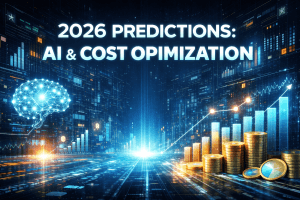Part 1: Storage and Networking for GenAI
Introduction
In this research note the pivotal role of generative AI (GenAI) in transforming AI datacenters is explored. Highlighting the importance of storage and networking in supporting AI/ML workloads. We emphasize the need for high-capacity, cost-effective storage that can handle diverse I/O patterns across different stages of data processing. Also discussed is the growing relevance of retrieval-augmented generation (RAG) and its storage implications. We examine the shift from proprietary high performance Infiniband to industry standard Ethernet for networking, stressing Ethernet’s scalability and performance improvements. We will summarize by identifying key challenges faced by organizations in building AI data centers, such as feeding accelerators, securing data, and managing data at scale, and emphasizing the importance of integrated, optimized infrastructure solutions.
The Future of AI Data Centers: Integrating Advanced Storage and Networking for GenAI Workloads
Introduction
Artificial Intelligence (AI) and Machine Learning (ML) have reached a pivotal point, significantly influencing the design and operation of modern data centers. Generative AI (GenAI) represents a major leap forward, requiring substantial infrastructure support in terms of computing power, networking, and storage. This paper outlines the critical and changing roles of storage and networking in AI data centers and offers insights into overcoming the unique challenges associated with these infrastructures.
The Role of Storage in AI Data Centers
AI and ML workloads are inherently data-intensive, necessitating robust storage solutions that can accommodate massive data volumes and diverse I/O patterns. The following key aspects of storage in AI data centers are vital:
- Data Accumulation and Ingestion: AI models require vast amounts of data, often sourced globally. Efficient and cost-effective storage solutions are essential for handling the scale and protocol of data ingestion.
- Pre-Processing: This stage involves cleaning and formatting data, which is both read and write-intensive. High-performance storage systems must support these operations efficiently.
- Training: Training models is a read-intensive process, but checkpointing during training can be highly write-intensive. Storage systems must manage these demands seamlessly to avoid bottlenecks.
- Inferencing: During inferencing, models are loaded into GPUs, requiring rapid high read-intensive access and high throughput. Creating large model repositories and supporting frequent loading and unloading of models is crucial.
- RAG (Retrieval-Augmented Generation): RAG introduces new storage challenges by augmenting models with dynamic data from vector databases. This requires fast data processing (xPUs) and the ability to embed new data frequently to maintain model accuracy.
The Shift from Infiniband to Ethernet in Networking
Traditionally, Infiniband has been the preferred networking solution for high-performance storage due to its low latency and scalability. However, recent advancements have positioned Ethernet as a viable alternative:
- Performance Parity: Ethernet has evolved to match Infiniband’s performance, making it suitable for high-performance AI data centers.
- Enterprise Adoption: As HPC environments have become more enterprise-oriented, Ethernet’s dominance in enterprise networks has driven its adoption in AI data centers.
- Scalability and Flexibility: Ethernet’s scalability and the ability to support GPU-to-GPU communication over protocols like RDMA have made it a preferred choice for modern AI workloads.
- Cloud Integration: Many hyperscale and private clouds offer Ethernet-based solutions, facilitating seamless integration and scalability for AI data centers.
Challenges and Solutions in Building AI Data Centers
Building AI data centers comes with several challenges that need to be addressed strategically:
- Feeding Accelerators: Ensuring that GPUs and other accelerators are efficiently fed with data requires high-performance storage and networking solutions.
- Data Security: Protecting sensitive data is paramount, necessitating robust security measures across storage and networking infrastructures.
- Data Management at Scale: Managing large volumes of data across global and hybrid environments requires advanced data management solutions that can handle data movement and processing efficiently.
- Avoiding Common Pitfalls: Treating storage and networking as afterthoughts can hinder AI data center performance. Integrated, optimized infrastructure solutions are essential for maximizing the potential of AI/ML workloads.
Conclusion
The future of GenAI data centers lies in the seamless integration of advanced storage and networking solutions. By addressing the unique challenges posed by GenAI workloads and leveraging the latest advancements in Ethernet technology, organizations can build robust, scalable AI data centers. Collaborative efforts between storage and networking providers, exemplified by the evolving role of the big public cloud provider, new compute architectures, and the partnerships between storage and network providers, will be crucial in driving this evolution and setting industry benchmarks for optimized AI infrastructure.
TheCUBE Research Recommendation
TheCUBE Research provides a set of strategic recommendations for organizations aiming to optimize their AI data centers.
- Integrated Planning: Organizations should consider storage and networking requirements from the outset when designing AI data centers.
- Adopting Ethernet: Leveraging Ethernet’s advancements can provide scalable and flexible networking solutions suitable for AI workloads.
- High-Performance Storage Solutions: Investing in storage systems that can handle diverse I/O patterns and support rapid data processing is essential.
- Collaborative Efforts: Industry collaboration and reference designs that integrate compute, storage, and networking components can provide optimized solutions for AI data centers.
By understanding the next generation requirements, organizations can build GenAI data centers that are not only capable of handling current workloads but are also scalable and adaptable to future advancements in AI and ML technologies.
Image: ismagilov/Getty Images
Up Next – Part 2 of Next Generation Infrastructure for Generative AI
Part 2: Clustered Systems Impact on the Generative AI Computing Stack


